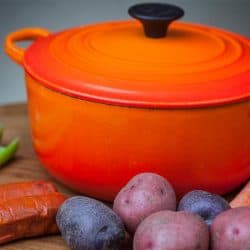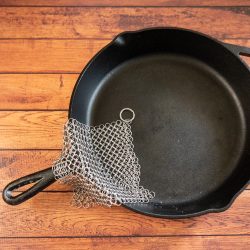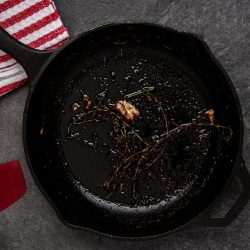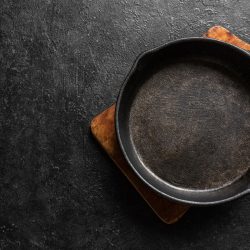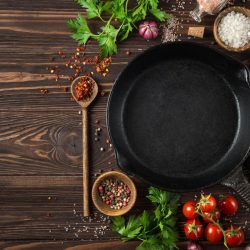Over time, your cast-iron pan may become bumpy on the bottom and unable to sit flat on the stove. Some warped skillets can't be saved, but yours might be salvageable. After thorough research, we found the reasons a cast-iron skillet warps and remedies to help you fix the problem.
A cast-iron skillet can warp because of drastic temperature changes, overheating, or the size of the burner. You can fix the pan by following these steps:
- Heat the pan on a burner set on low for about 10 minutes.
- Once the pan is hot, place it on your work surface with a towel underneath it.
- Place another towel inside the pan over the warped area, and hit the warped area with a hammer to flatten it.
- You can also put a block of wood on top of the towel in the pan and hammer with greater force to flatten the warped section.
These restorative steps might sound simple, but you should be cautious when performing them to prevent further damage to the pan. To prevent the problem from happening again, read on for details.

What Makes Cast-Iron Warp?
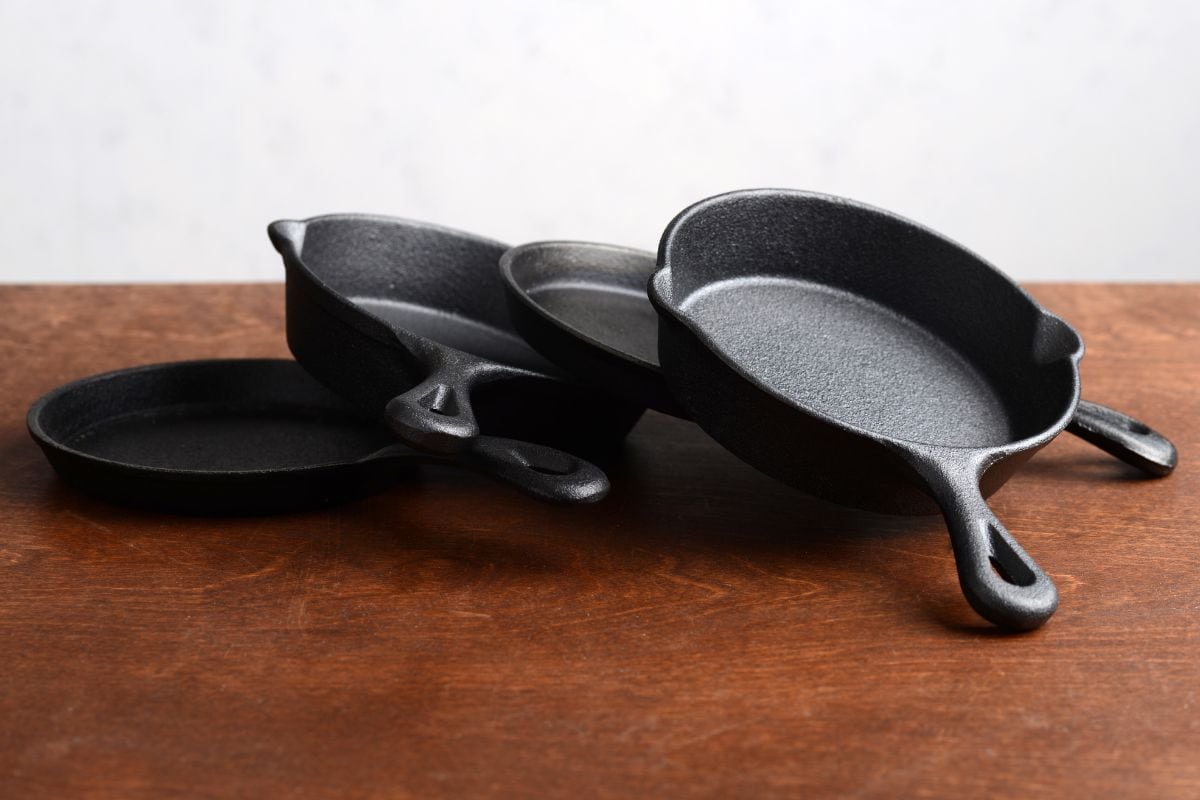
Everything from roasting a chicken to searing a T-bone can be done in a cast-iron skillet. It will become naturally nonstick over time.
Even on an open fire, you can use it for cooking just about anything, and it will last a long time if properly cared for.
However, if mistreated, your the pan will start to buckle and be hard to use. If you have one or more warped pans in your collection, cooking can be troublesome because of the uneven surface.
Let's take a closer look at what causes warped cast-iron pans.
Sudden Temperature Changes
Removing your pan from the cooker and instantly drenching it with cold water will actually damage your cookware. Abrupt changes in temperature can make your skillet warp. You should give it a few minutes to cool down before washing it.
Overheating
The same sudden temperature change concept applies when you heat your pan from room to a very high temperature. Cast iron can stand heat up to 1500°F, but prolonged exposure to heat can also cause the pan to deform.
The short period of extreme heating causes stress, and the uneven distribution of heat can deform the metal.
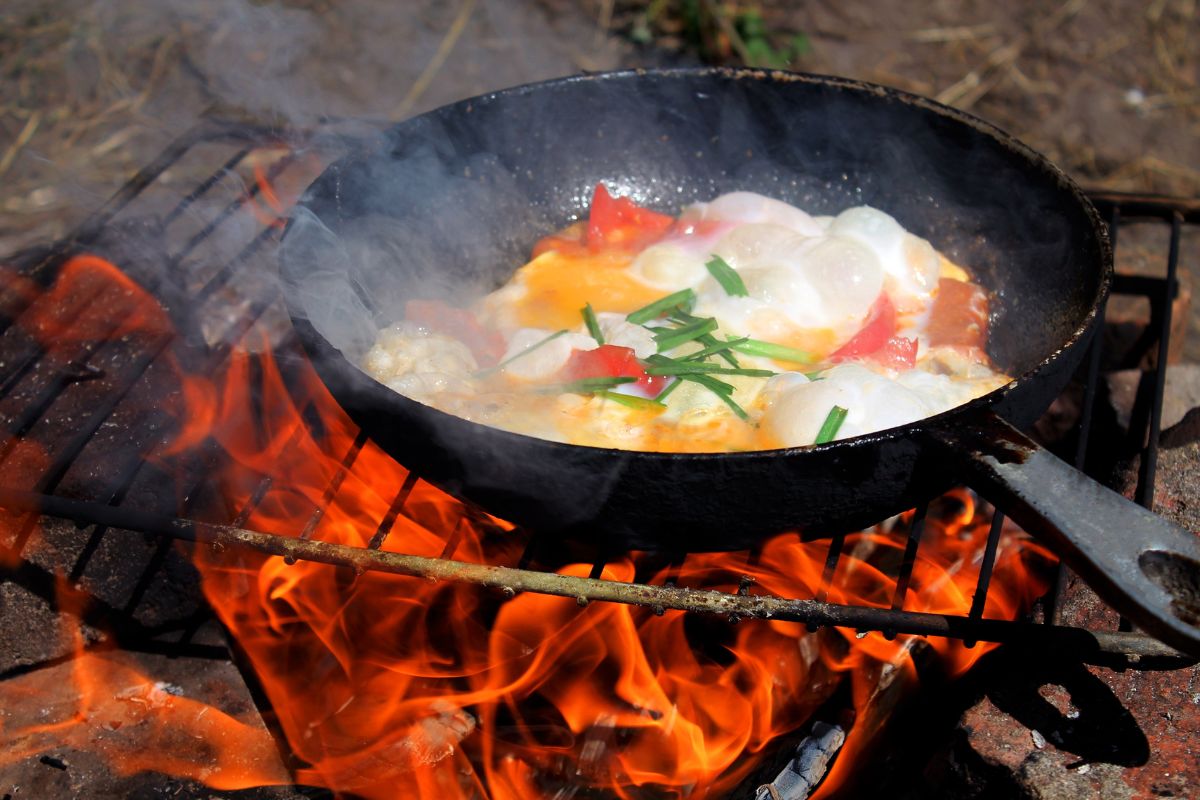
Weak Material
Investing in quality cookware to withstand constant exposure to high temperatures and harsh cooking environments is always a good idea. Thicker pans also conduct heat better than thinner pans.
Low-quality, thin metal may be prone to deforming and rusting. Antique skillets are known to be durable, but if you want a new one, you can always buy one from a trusted brand such as Lodge, Smithey, or Le Creuset.
Click here to see this Utopia cast-iron skillet on Amazon.
Burner Size And Type
Using a burner that is too small for your cast-iron skillet can lead to warping because the burner's heat is focused on the center of the skillet.
This can result in inconsistent heating along the edges of the pan. You should consider the dimensions of your burners when choosing a skillet size.
Also, the type of stove you cook on can affect the heat conduction process. Cast-iron pans work best with gas and electric burners.
Watch this YouTube video to learn how to tell whether your skillet is warped.
How Do You Fix A Bumpy Cast Iron Pan?
Bumpy pans can be troublesome when you cook with them, and if you're considering replacing them, they can be expensive. You can fix the pan, but the process can be tricky and requires caution
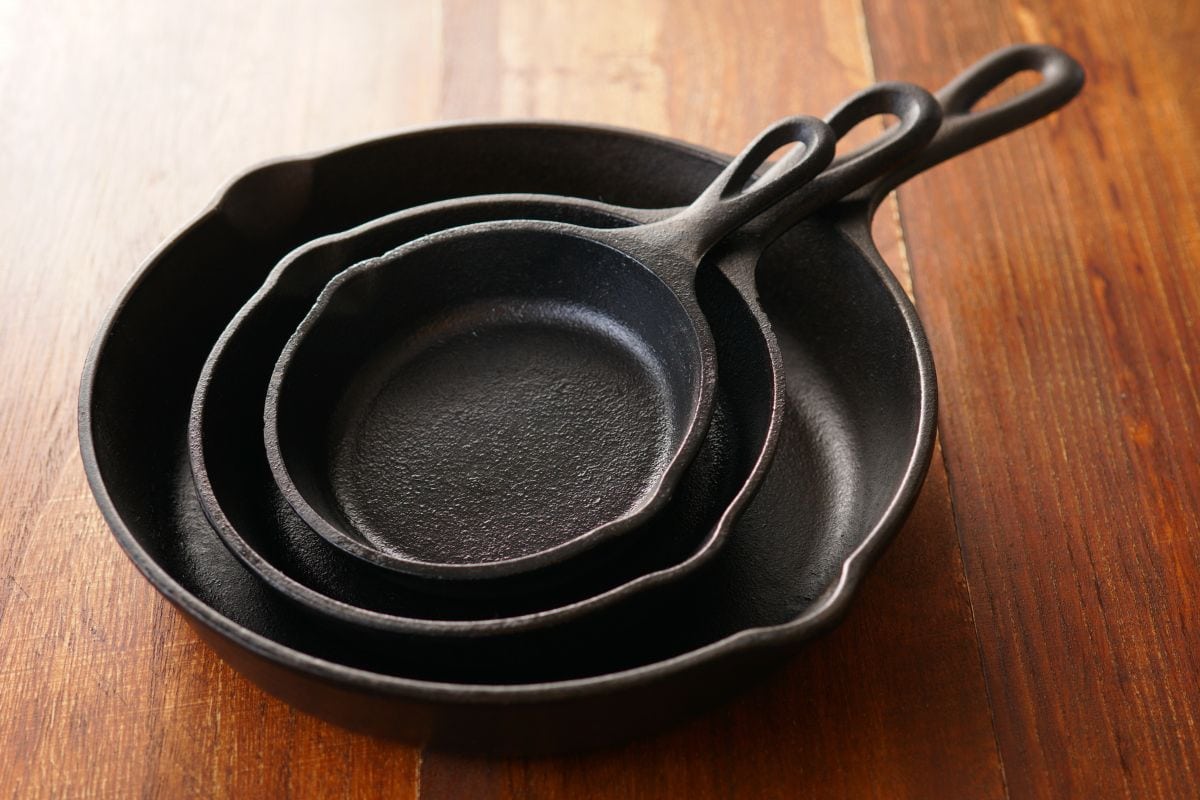
Things You’ll Need
- Stove with burner
- A flat, supportive work surface
- Towels
- A block of wood
- Hammer
Steps
- Heat the pan on a burner set on low for about 10 minutes.
- Place a towel on your work surface. Once the pan is hot, place it on top of the towel. The towel should serve as a cushion for the pan.
- Place another towel on top of the warped area in the pan. Use the hammer to pound the warped area flat.
- If your pan is extremely warped, put a block of wood on top of the towel in the pan. Then hammer the block of wood with greater force to flatten the warped section. Be careful when hammering—you don't want to cause further damage to the pan.
Best Kitchen Practices For Cast-Iron Pans
Many people believe that the finest pans are the oldest. You need to know curing, caring, and cleaning rules to take care of your cast-iron pans. Here are the kitchen practices you should follow.
- Season your pan with vegetable or canola oil before first use and reseason it occasionally.
- After each use, wash your pan with soap and water and scrub any dirt or gunk off the bottom.
- Keep your cookware dry. Always dry out your pan after use with a paper towel or clean cloth and coat it with a small amount of oil before storage.
- Prevent your pan from warping by using a skillet that is the same size or smaller than the burner. Also, avoid doing an action that will expose your cookware to sudden temperature changes.
Can I Make My Cast-Iron Pan Smooth?
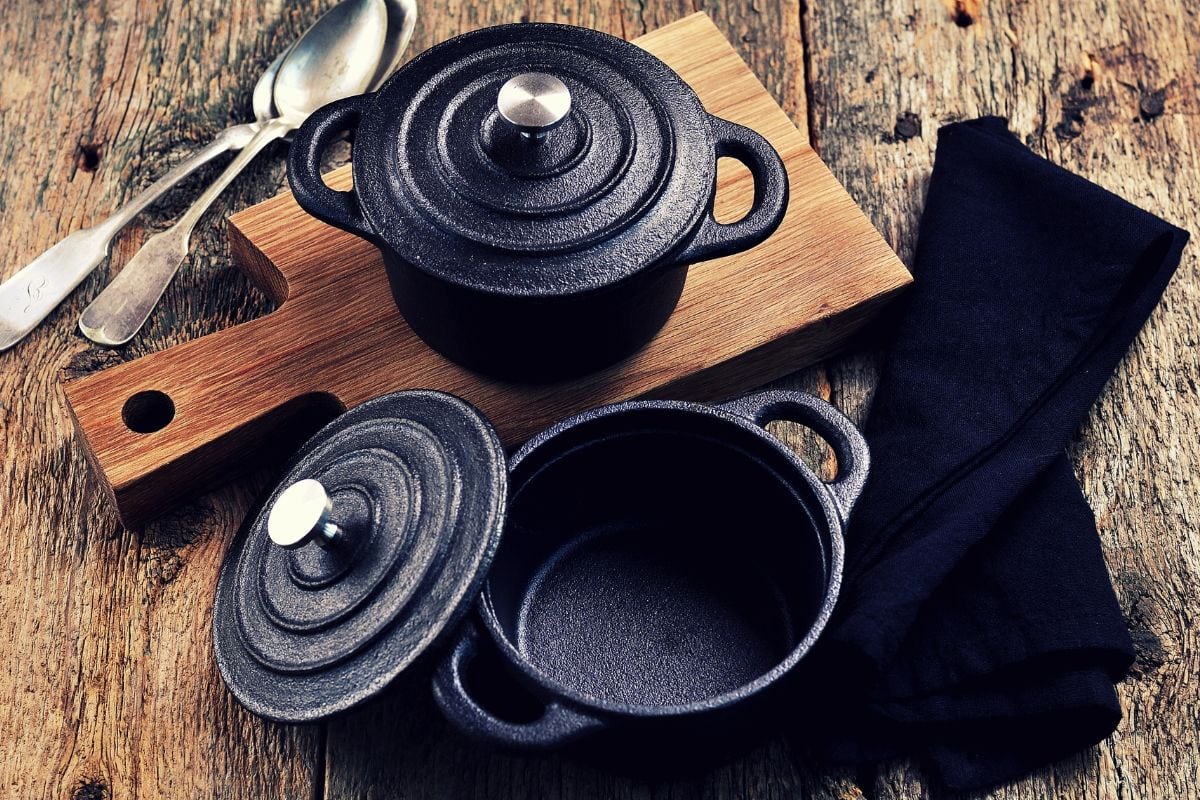
There are ways to make a rough cast-iron pan smooth. You can sand your pan to give it a smooth interior. The sanding method works well and won't hurt your pan if you do it properly.
You can polish the pan by hand or with an electric hand sander using 60 to 80 grit sandpaper. Work in a circular motion, and make sure you sand every part of the pan.
How Do I Know If My Cast-Iron Pan Is Ruined?
Old cast-iron pans can be mishandled over time so that they're beyond fixing. Sometimes, the only thing to be done is toss them out. You will know it is time to discard your pan when...
- It's cracked. The metal expands and contracts as you use it, which will cause it to crack all the way through. Cracked cookware is a hazard.
- It has a hole in it. It is rare for cast iron to have holes, but it is possible when there is severe rusting in your skillet.
- It's seriously warped or unsteady. Technically, you can still cook with a pan in this condition; however, you will have difficulty cooking, which might cause disaster in your kitchen. There is a higher risk of cracking if you want to try fixing a severely wobbly skillet.
- Too much rust. Rust is a frequent issue with cast-iron pans that can often be remedied. However, if rust has taken over a large portion of the metal, you may want to buy a new pan.
Buy this cast-iron pan on Amazon.
Final Thoughts
A cast-iron skillet is a must-have in the kitchen for its versatility in cooking a wide range of recipes.
However, if mishandled, a cast-iron pan can become uneven on the bottom. This deformation can happen because of temperature-related or material issues. Fortunately, restoring a cast-iron pan to its original shape is fairly easy.
To keep the problem from happening again, follow good practices with your pan in the kitchen. If your pan is beyond repair, you can buy a new one from a trusted brand.
If you found this post helpful, check out these related articles:
6 Of The Best Ovenproof Skillets
How Often Do You Season A Cast Iron Pan?



